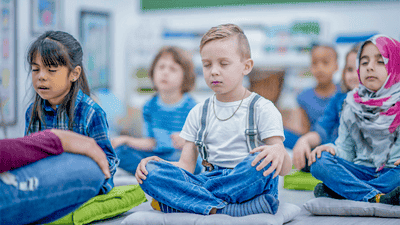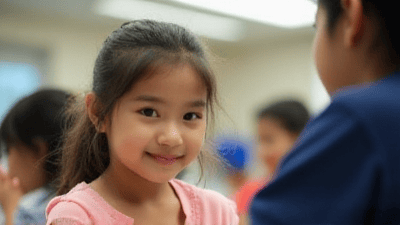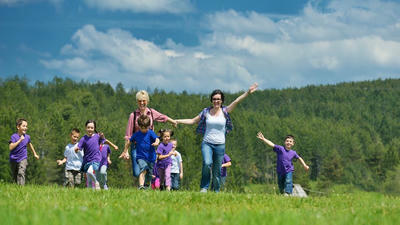
In recent years, mindfulness has gained significant attention as a valuable practice within educational settings. With increasing academic pressure and the fast-paced nature of modern life, students often experience stress and anxiety that can hinder their focus, learning, and overall well-being. Mindfulness practices in schools aim to counteract these challenges by fostering resilience, enhancing concentration, and promoting emotional regulation among students.
Understanding Mindfulness
Mindfulness is the practice of being fully present and engaged in the moment while maintaining an attitude of non-judgment and acceptance. It involves focusing attention on one's thoughts, feelings, bodily sensations, and surrounding environment without distraction or judgment. This practice can be traced back to ancient meditation traditions, particularly in Buddhism, but has gained popularity in the West as a valuable tool for mental health and well-being.
In an educational context, mindfulness encourages students to develop greater awareness of their thoughts and feelings, which can help them better manage stress and enhance their focus on learning activities.
The Importance of Mindfulness in Education
1. Enhancing Focus and Attention
Today's students are often bombarded with distractions from technology, social media, and the demands of daily life. Mindfulness practices can help them improve their ability to concentrate.
-
Reducing Distractions: Mindfulness teaches students to redirect their attention back to the present moment. This practice can lead to improved focus during class and on assignments.
-
Strengthening Working Memory: Research suggests that mindfulness can enhance working memory, a critical cognitive function essential for academic success. Improved working memory allows students to hold and manipulate information effectively while engaged in learning tasks.
2. Fostering Emotional Regulation
Emotional well-being is crucial for students' overall development. Mindfulness practices help students recognize and regulate their emotions, leading to improved mental health.
-
Increased Self-Awareness: Mindfulness helps students develop a deeper understanding of their emotions, enabling them to identify feelings before they escalate into stress or anxiety.
-
Better Coping Strategies: With increased self-awareness, students are better equipped to handle challenging situations. Mindfulness provides them with tools to calm themselves, think clearly, and respond to difficulties in a more measured manner.
3. Building Resilience
Resilience refers to the ability to bounce back from challenges and setbacks. Mindfulness can play a significant role in developing resilience in students.
-
Adaptability to Change: Mindfulness encourages a flexible mindset, allowing students to adapt to new situations and challenges. This adaptability is key to navigating the ups and downs of school life.
-
Cultivating a Growth Mindset: Mindfulness practices promote a growth mindset by encouraging students to view challenges as opportunities for learning rather than as failures. This perspective fosters resilience and perseverance.
4. Reducing Stress and Anxiety
Stress and anxiety are prevalent among students, impacting their academic performance and overall well-being. Mindfulness practices can serve as effective tools to combat these issues.
-
Promoting relaxation: Mindfulness activities, such as deep breathing and meditation, trigger the body's relaxation response, which can help alleviate stress and anxiety symptoms.
-
Lowering cortisol levels: Research indicates that regular mindfulness practice can reduce cortisol, the hormone associated with stress, leading to a calmer state of mind for students.
5. Enhancing Social Skills
Mindfulness does not only benefit individual students; it can also foster a supportive classroom environment by enhancing social skills and interactions.
-
Increased Empathy: Practicing mindfulness enables students to develop empathy and compassion towards their peers, fostering stronger relationships and a positive social atmosphere.
-
Improved Communication: Mindful students are more likely to listen actively and express themselves clearly. These skills are essential for effective collaboration and conflict resolution.

Implementing Mindfulness in Schools
To integrate mindfulness practices effectively, schools can adopt a variety of strategies tailored to their unique needs and resources. Here are some practical approaches to introducing mindfulness into the school environment:
1. Mindfulness Curriculum
Integrating mindfulness into the curriculum can provide students with structured opportunities to practice mindfulness regularly.
-
Dedicated Mindfulness Classes: Schools can offer specific classes focused on mindfulness techniques, including meditation, breathing exercises, and body awareness practices. These classes can be integrated into the existing health or physical education curriculum.
-
Incorporating Mindfulness Across Subjects: Educators can infuse mindfulness into various subjects, using short mindfulness practices as warm-ups or transitions between lessons. For example, incorporating mindful breathing before tests can help calm students and enhance focus.
2. Short Mindfulness Practices
Incorporating short mindfulness practices throughout the school day can make a significant impact.
-
Mindful Moments: Educators can initiate "mindful moments" during class, encouraging students to pause, take deep breaths, and focus on their surroundings. These moments can be as brief as a few minutes and can help center students before starting new activities.
-
Mindful Transitions: Using mindfulness techniques during transitions between subjects can help students shift their focus and energy. Simple breathing exercises or guided visualizations can be effective during these moments.
3. Training for Educators
Providing training and resources for educators is essential to ensure the successful implementation of mindfulness practices.
-
Professional Development Workshops: Schools can offer workshops and training sessions on mindfulness techniques for educators, equipping them with the tools to lead mindfulness activities in their classrooms effectively.
-
Access to Resources: Providing teachers with access to mindfulness resources, including guided meditation recordings, lesson plans, and educational materials, can facilitate their implementation efforts.
4. Creating a Mindful School Culture
Fostering a school culture that values mindfulness can enhance its effectiveness and sustainability.
-
Leadership Commitment: School leaders play a crucial role in promoting mindfulness initiatives. Leadership commitment to mindfulness practices sets the tone for the entire school community.
-
Parent Involvement: Engaging parents in mindfulness initiatives can enhance the impact of these practices. Schools can offer workshops for parents to introduce mindfulness concepts and encourage family mindfulness practices at home.
5. Community Partnerships
Collaborating with organizations that specialize in mindfulness education can enrich school-based programs.
-
Partnerships with Mindfulness Organizations: Schools can partner with local or national organizations that focus on mindfulness in education to access training, resources, and support.
-
Guest Speakers and Workshops: Inviting mindfulness experts to conduct workshops for students and staff can provide valuable insights and enhance the overall mindfulness program.
Overcoming Challenges in Mindfulness Implementation
While the benefits of mindfulness in schools are profound, challenges may arise during implementation. Here are some common challenges and potential solutions:
1. Resistance to Change
Some educators may be hesitant to embrace mindfulness practices, particularly if they are unfamiliar with the concept.
-
Education and Awareness: Providing information on the research and benefits of mindfulness can help alleviate concerns and encourage buy-in from educators.
-
Pilot Programs: Starting with small pilot programs can demonstrate the impact of mindfulness practices in real settings, eventually leading to wider adoption.
2. Time Constraints
Teachers often face tight schedules, making it difficult to integrate mindfulness practices into their routines.
-
Micro-Practices: Emphasizing brief, effective mindfulness exercises can help educators implement practices without requiring extensive time commitments.
-
Embedding Mindfulness in Existing Curriculum: Integrating mindfulness into existing lessons can minimize disruptions to the school schedule while still providing valuable practice.
3. Measurement of Effectiveness
Evaluating the effectiveness of mindfulness programs can be challenging, particularly in quantifying outcomes.
-
Feedback Mechanisms: Implementing feedback tools, such as surveys and qualitative assessments, can help gauge the impact of mindfulness practices on student well-being and academic performance.
-
Collaborating with Researchers: Partnering with researchers or educational institutions to conduct studies can provide valuable insights into the effectiveness of mindfulness initiatives.
Conclusion
Mindfulness in schools presents a powerful opportunity to foster focus, resilience, and emotional well-being among students. Through structured practices and a supportive environment, mindfulness can significantly enhance students' ability to manage stress, develop emotional regulation, and cultivate meaningful relationships with peers.
As educational institutions prioritize holistic development and student well-being, integrating mindfulness practices will become increasingly vital. By embracing mindfulness, schools can not only improve academic performance but also contribute to the overall mental health and happiness of their students.
Through the collective efforts of educators, parents, and communities, mindfulness can reshape the educational experience, providing students with the tools they need to navigate both academic challenges and the complexities of life beyond the classroom.



